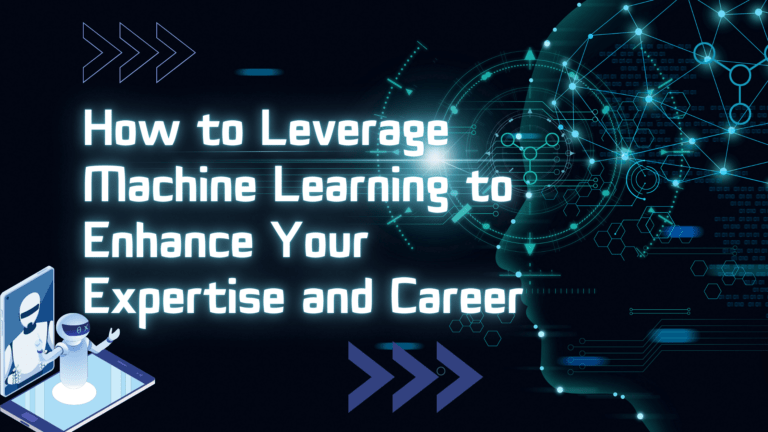Table of Contents
Definition of Artificial Intelligence
Artificial Intelligence can be defined as the simulation of human intelligence in machines that are programmed in such a way that they can think and learn like humans. It involves the development of computer systems that can accomplish tasks that would generally require human intelligence. Speech recognition, decision-making, problem-solving, and language translation are examples of AI. It aims to create intelligent machines that can perceive their environment, understand and interpret data, and make informed decisions or take actions based on that information. The goal of AI is to replicate human intelligence and enhance human capabilities in various fields, including healthcare, finance, transportation, and entertainment.
History of Artificial Intelligence
The history of Artificial Intelligence dates back to the 1950s when the term was first coined by computer scientist John McCarthy. However, the concept of AI can be traced back even further to ancient times, with the development of mechanical devices that could perform simple tasks. Over the years, AI has evolved and advanced, with significant milestones such as the development of expert systems in the 1970s and the emergence of machine learning algorithms in the 1990s. Today, AI is a rapidly growing field with numerous applications and advancements, paving the way for a future where intelligent machines play a significant role in various aspects of our lives.
Types of Artificial Intelligence.
Artificial Intelligence can be broadly categorized into two types: Narrow AI and General AI.
- Narrow AI: Narrow AI, also called Weak AI, refers to AI systems that are designed to perform specific tasks having a high level of proficiency. These systems are built in a specialized domain and can outperform humans in specific areas. Voice assistants, recommendation systems, and image recognition algorithms are the best example of Narrow AI. It is the most common form of AI that we encounter in our daily lives.
- General AI: General AI, also referred to as Strong AI or AGI (Artificial General Intelligence), represents AI systems that possess human-level intelligence across multiple domains. These systems would have the ability to understand, learn, and apply knowledge in various contexts, similar to human intelligence. General AI is still largely a theoretical concept, and achieving it remains an ongoing challenge in AI research.
These are just some of the main types of AI, and the field continues to evolve with new advancements and applications being developed.
Components of Artificial Intelligence
Artificial Intelligence (AI) consists of various components that work together to enable machines to perform intelligent tasks. These components include:
1. Data: Data is the foundation of AI. It provides the information that AI systems use to learn, make decisions, and improve their performance. High-quality and diverse data is essential for the proper training of AI models.
2. Algorithms: Algorithms are the mathematical models and rules that AI systems use to process and analyze data. They determine how the AI system learns from the data and makes predictions or decisions.
3. Computing Power: AI requires significant computing power to process large amounts of data and perform complex calculations. High-performance hardware, such as GPUs (Graphics Processing Units), is often used to accelerate AI computations.
4. Machine Learning: Machine learning is a subset of AI that focuses on algorithms and statistical models that enable computers to learn from and make predictions or decisions without being explicitly programmed. It involves training models on big datasets to identify patterns and make accurate predictions or decisions. The common paths in machine learning are Supervised learning, unsupervised learning, and reinforcement learning.
5. Neural Networks: Neural networks are computational models inspired by the structure and functioning of the human brain. It includes the collection of interconnected nodes (artificial neurons) that are organized in layers. Neural networks excel in learning complex patterns and are widely used in deep learning, a subfield of machine learning that has achieved significant breakthroughs in recent years.
6. Natural Language Processing (NLP): NLP is the branch of AI that deals with the interaction between computers and human language. It enables machines to understand, interpret, and generate human language, allowing for applications such as chatbots, language translation, sentiment analysis, and voice recognition.
7. Computer Vision: Computer vision involves teaching machines to perceive and interpret visual information from images or videos. It enables AI systems to analyze and understand visual content, leading to applications like facial recognition, object detection, autonomous vehicles, and medical imaging.
8. Robotics: Robotics is an interdisciplinary field that combines AI with mechanical engineering and electronics. It focuses on designing and developing intelligent machines that can interact with the physical world. Robotic systems leverage AI algorithms to perceive and understand their environment, make decisions, and perform physical tasks.
9. Cloud Computing: Cloud computing provides the infrastructure and resources needed to store and process large amounts of data for AI applications. It allows for scalability, flexibility, and cost-effectiveness in deploying AI systems.
10. Ethical Considerations: Ethical considerations are an important component of AI. As AI becomes more advanced and autonomous, it raises ethical questions around privacy, bias, transparency, and accountability.
These components work together to create intelligent AI systems that can perform a wide range of tasks and applications. As AI continues to advance, new components and technologies will likely emerge, further expanding the capabilities of AI.
Applications of Artificial Intelligence.
There is a broad range of applications of Artificial Intelligence (AI) across various industries and sectors. Some of the vital applications of AI are presented here:
1. Healthcare: AI is being used in healthcare to improve diagnosis, treatment planning, and patient care. AI-powered systems can analyze medical images, detect diseases, and provide personalized treatment recommendations.
Read Also: Tech Trends In Clinical Research: 5 Things To Know
2. Finance: AI is used in the finance industry for tasks such as fraud detection, risk assessment, and algorithmic trading. AI algorithms can analyze large amounts of financial data to identify patterns and make predictions.
3. Retail: AI is transforming the retail industry by enabling personalized shopping experiences, inventory management, and demand forecasting. AI-powered chatbots and virtual assistants are also being used in order to enhance client service in this sector.
4. Manufacturing: AI is being used in manufacturing to optimize production processes, improve quality control, and enable predictive maintenance. AI-powered robots and automation systems can perform repetitive tasks more efficiently.
5. Transportation: AI is playing a crucial role in the development of autonomous vehicles and smart transportation systems. AI algorithms can analyze real-time traffic data, optimize routes, and improve safety on the roads.
6. Education: AI is being used in education to personalize learning experiences, provide adaptive tutoring, and automate administrative tasks. AI-powered virtual assistants can answer students’ questions and provide feedback.
7. Customer Service: AI-powered chatbots and virtual assistants are being used in customer service to provide instant responses and support. These AI systems can handle a large volume of customer inquiries and provide personalized recommendations.
8. Cybersecurity: AI is being used in cybersecurity to detect and prevent cyber threats. AI algorithms can analyze network traffic, identify suspicious activities, and respond to security incidents in real time.
9. Agriculture: AI is being used in agriculture to optimize crop yield, monitor soil conditions, and manage irrigation systems. AI-powered drones and robots can also be used for precision farming.
10. Entertainment: AI is being used in the entertainment industry for tasks such as content recommendation, personalized advertising, and virtual reality experiences. AI algorithms can analyze user preferences and behavior to deliver personalized content.
These are just a few examples of how AI is being applied in various industries. As AI technology continues to grow, we can expect to develop and see even more creative applications in the future.
Read Also: 5 Ways Businesses Can Adopt Artificial Intelligence(AI)
Conclusion
Artificial Intelligence has come a long way since its inception, and it continues to shape our world in remarkable ways. From narrow AI systems that assist us in our daily lives to the pursuit of achieving General AI, the possibilities are vast. As technology advances and AI becomes more sophisticated, we can expect further advancements and applications that will revolutionize industries and enhance human capabilities. Understanding the history, types, and components of AI is crucial in navigating the AI-driven future and harnessing its immense potential for the betterment of society.










Comments are closed.